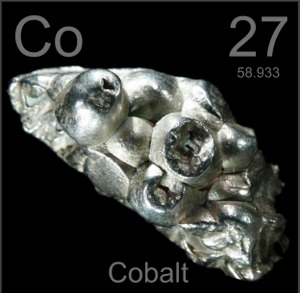The cobalt producers
would like the world to believe a crisis is unfolding in their supply
chain. Cobalt has become a crucial metal
for lithium ion batteries and over 40% of total cobalt supplies end up in
batteries. Industry analysts have
predicted cobalt demand will increase by at least 50% from 50,000 metric tons
per year in 2016 to 80,000 tons by the end of 2020.
Few companies develop
cobalt as a primary ore. Only about 6%
of cobalt is produced at dedicated mines.
Instead, it is produced as a by-product of nickel or copper mining. Significant cobalt production is carried out
in the nickel and copper mines of the Democratic Republic of the Congo, China,
Zambia, Russia, and Australia.

The cobalt price
has surged in recent months, largely on new demand from battery manufacturers - or
in anticipation of new demand. There
have been dire predictions of cobalt shortfall if production is not increased
to meet the requirements from battery manufacturers. Perhaps it is simply the location of current
production that has the sector agitated.
About 60% of total annual supply comes from the Congo, which ranks as
the poorest country in the world.
Poverty rarely makes for a stable political situation.
Several of the
companies listed in the previous two posts are also involved in cobalt
production. Glencore (GLEN: LSE)
produces about 21,500 metric tons of cobalt per year and is the largest cobalt
producer in the world. Its first place
position was aided by the acquisition of Fleurette Group for $960 million. Fleurette produces copper and cobalt in the
Congo. Glencore got access to Mutanda
Mining and Katanga Mining to boost its cobalt presence.
The China government
owns part of China Molybdenum
(3993: HKEX). China Moly produces about 9,300 metric tons
of cobalt each year. The company’s
market share may increase with its 2016 acquisition of Tenke mine in the
Congo. Expect all of the Tenke
production to end up on China.
Brazil’s Vale SA (VALE: NYSE)
produced 5,278 metric tons of cobalt in 2016, from its mine interests in
Ontario and Manitoba, Canada. All of
Vale’s cobalt production is a by-product of its copper production.
The Congo is
host to a number of foreign mining companies.
The local government also has interests.
Gecamines SA
is a state controlled cobalt producer with an output around 4,160 metric tons
per year. It is also involved with
several joint ventures with Glencore and Ivanhoe Mines. Gecamines would probably not be the best
choice for a cobalt play - at least not in the near-term. Almost $750 million paid by international
mining companies to the Gecamines over a three-year period are missing from the
company's accounts.
Higher prices
have brought new players to the market.
With higher prices the economics of mining for cobalt can be more easily
justified. Investor dollars are
leapfrogging lithium and graphite opportunities to participate the cobalt
market. Quantum Cobalt Corporation (QBOT: CSE) recently raised
$1.0 million in new capital to move forward with a cobalt project in Nipsing,
Ontario. First Cobalt Corporation (FCC: TSX) is another cobalt
player exploring in Ontario, Canada.
Neither the author of the Small Cap Strategist web
log, Crystal Equity Research nor its affiliates have a beneficial interest in
the companies mentioned herein.
No comments:
Post a Comment